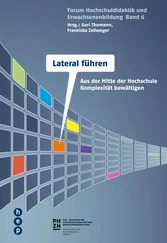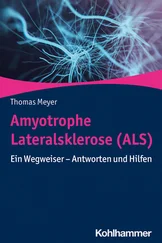1 ...6 7 8 10 11 12 ...16 51 51. Kwiatkowski, T.J. Jr., Bosco, D.A., Leclerc, A.L. et al. (2009). Mutations in the FUS/TLS gene on chromosome 16 cause familial amyotrophic lateral sclerosis. Science 323 (5918): 1205–1208.
52 52. Vance, C., Rogelj, B., Hortobágyi, T. et al. (2009). Mutations in FUS, an RNA processing protein, cause familial amyotrophic lateral sclerosis type 6. Science 323 (5918): 1208–1211.
53 53. Yan, J., Deng, H.X., Siddique, N. et al. (2010). Frameshift and novel mutations in FUS in familial amyotrophic lateral sclerosis and ALS/dementia. Neurology 75 (9): 807–814.
54 54. Kenna, K.P., van Doormaal, P.T., Dekker, A.M. et al. (2016). NEK1 variants confer susceptibility to amyotrophic lateral sclerosis. Nat Genet 48 (9): 1037–1042.
55 55. Cirulli, E.T., Lasseigne, B.N., Petrovski, S. et al. (2015). Exome sequencing in amyotrophic lateral sclerosis identifies risk genes and pathways. Science 347 (6229): 1436–1441.
56 56. Freischmidt, A., Wieland, T., Richter, B. et al. (2015). Haploinsufficiency of TBK1 causes familial ALS and fronto‐temporal dementia. Nat Neurosci 18 (5): 631–636.
57 57. Senderek, J., Garvey, S.M., Krieger, M. et al. (2009). Autosomal‐dominant distal myopathy associated with a recurrent missense mutation in the gene encoding the nuclear matrix protein, matrin 3. Am J Hum Genet 84 (4): 511–518.
58 58. Watts, G.D., Wymer, J., Kovach, M.J. et al. (2004). Inclusion body myopathy associated with paget disease of bone and frontotemporal dementia is caused by mutant valosin‐containing protein. Nat Genet 36 (4): 377–381.
59 59. Rubino, E., Rainero, I., Chiò, A. et al. (2012). SQSTM1 mutations in frontotemporal lobar degeneration and amyotrophic lateral sclerosis. Neurology 79 (15): 1556–1562.
60 60. Bucelli, R.C., Arhzaouy, K., Pestronk, A. et al. (2015). SQSTM1 splice site mutation in distal myopathy with rimmed vacuoles. Neurology 85 (8): 665–674.
61 61. Laurin, N., Brown, J.P., Morissette, J., and Raymond, V. (2002). Recurrent mutation of the gene encoding sequestosome 1 (SQSTM1/p 62) in paget disease of bone. Am J Hum Genet 70 (6): 1582–1588.
62 62. Maruyama, H., Morino, H., Ito, H. et al. (2010). Mutations of optineurin in amyotrophic lateral sclerosis. Nature 465 (7295): 223–226.
63 63. Pottier, C., Bieniek, K.F., Finch, N. et al. (2015). Whole‐genome sequencing reveals important role for TBK1 and OPTN mutations in frontotemporal lobar degeneration without motor neuron disease. Acta Neuropathol 130 (1): 77–92.
64 64. Ayaki, T., Ito, H., Komure, O. et al. (2018). Multiple proteinopathies in familial ALS cases with optineurin mutations. J Neuropathol Exp Neurol 77 (2): 128–138.
65 65. Albagha, O.M., Visconti, M.R., Alonso, N. et al. (2010). Genome‐wide association study identifies variants at CSF1, OPTN and TNFRSF11A as genetic risk factors for paget's disease of bone. Nat Genet 42 (6): 520–524.
66 66. Nicolas, A., Kenna, K.P., Renton, A.E. et al. (2018). Genome‐wide analyses identify KIF5A as a novel ALS gene. Neuron 97 (6): 1268–1283.e6.
67 67. van der Zee, J., Pirici, D., Van Langenhove, T. et al. (2009). Clinical heterogeneity in 3 unrelated families linked to VCP p.Arg159His. Neurology 73 (8): 626–632.
68 68. van Blitterswijk, M., van Es, M.A., Hennekam, E.A. et al. (2012). Evidence for an oligogenic basis of amyotrophic lateral sclerosis. Hum Mol Genet 21 (17): 3776–3784.
69 69. van Blitterswijk, M., Baker, M.C., DeJesus‐Hernandez, M. et al. (2013). C9ORF72 repeat expansions in cases with previously identified pathogenic mutations. Neurology 81 (15): 1332–1341.
70 70. Giannoccaro, M.P., Bartoletti‐Stella, A., Piras, S. et al. (2017). Multiple variants in families with amyotrophic lateral sclerosis and frontotemporal dementia related to C9orf72 repeat expansion: further observations on their oligogenic nature. J Neurol 264 (7): 1426–1433.
71 71. Restagno, G., Lombardo, F., Sbaiz, L. et al. (2008). The rare G93D mutation causes a slowly progressing lower motor neuron disease. Amyotroph Lateral Scler 9 (1): 35–39.
72 72. Luigetti, M., Conte, A., Madia, F. et al. (2009). Heterozygous SOD1 D90A mutation presenting as slowly progressive predominant upper motor neuron amyotrophic lateral sclerosis. Neurol Sci 30 (6): 517–520.
73 73. Georgoulopoulou, E., Gellera, C., Bragato, C. et al. (2010). A novel SOD1 mutation in a young amyotrophic lateral sclerosis patient with a very slowly progressive clinical course. Muscle Nerve 42 (4): 596–597.
74 74. Del Grande, A., Conte, A., Lattante, S. et al. (2011). D11Y SOD1 mutation and benign ALS: a consistent genotype‐phenotype correlation. J Neurol Sci 309 (1–2): 31–33.
75 75. Juneja, T., Pericak‐Vance, M.A., Laing, N.G. et al. (1997). Prognosis in familial amyotrophic lateral sclerosis: progression and survival in patients with glu100gly and ala4val mutations in Cu, Zn superoxide dismutase. Neurology 48 (1): 55–75.
76 76. Takazawa, T., Ikeda, K., Hirayama, T. et al. (2010). Familial amyotrophic lateral sclerosis with a novel G85S mutation of superoxide dismutase 1 gene: clinical features of lower motor neuron disease. Intern Med 49 (2): 183–186.
77 77. Conte, A., Lattante, S., Zollino, M. et al. (2012). P525L FUS mutation is consistently associated with a severe form of juvenile amyotrophic lateral sclerosis. Neuromuscul Disord 22 (1): 73–75.
78 78. Hübers, A., Just, W., Rosenbohm, A. et al. (2015). De novo FUS mutations are the most frequent genetic cause in early‐onset German ALS patients. Neurobiol Aging 36 (11): 3117.
79 79. Leblond, C.S., Webber, A., Gan‐Or, Z. et al. (2016). De novo FUS P525L mutation in Juvenile amyotrophic lateral sclerosis with dysphonia and diplopia. Neurol Genet 2 (2): e63.
80 80. Oskarsson, B., Gendron, T.F., and Staff, N.P. (2018). Amyotrophic lateral sclerosis: an update for 2018. Mayo Clin Proc 93 (11): 1617–1628.
81 81. Kabashi, E., Champagne, N., Brustein, E., and Drapeau, P. (2010). In the swim of things: recent insights to neurogenetic disorders from zebrafish. Trends Genet 26 (8): 373–381.
82 82. Babin, P.J., Goizet, C., and Raldúa, D. (2014). Zebrafish models of human motor neuron diseases: advantages and limitations. Prog Neurobiol 118: 36–58.
83 83. De Giorgio, F., Maduro, C., Fisher, E.M.C., and Acevedo‐Arozena, A. (2019). Transgenic and physiological mouse models give insights into different aspects of amyotrophic lateral sclerosis. Dis Model Mech 12 (1).
84 84. Gurney, M.E., Pu, H., Chiu, A.Y. et al. (1994). Motor neuron degeneration in mice that express a human Cu, Zn superoxide dismutase mutation. Science 264 (5166): 1772–1775.
85 85. Crociara, P., Chieppa, M.N., Vallino Costassa, E. et al. (2019). Motor neuron degeneration, severe myopathy and TDP‐43 increase in a transgenic pig model of SOD1‐linked familiar ALS. Neurobiol Dis 124: 263–275.
86 86. Benatar, M. (2007). Lost in translation: treatment trials in the SOD1 mouse and in human ALS. Neurobiol Dis 26 (1): 1–13.
87 87. Sullivan, P.M., Zhou, X., Robins, A.M. et al. (2016). The ALS/FTLD associated protein C9orf72 associates with SMCR8 and WDR41 to regulate the autophagy‐lysosome pathway. Acta Neuropathol Commun 4 (1): 51.
88 88. Chew, J., Gendron, T.F., Prudencio, M. et al. (2015). Neurodegeneration. C9ORF72 repeat expansions in mice cause TDP‐43 pathology, neuronal loss, and behavioral deficits. Science 348 (6239): 1151–1154.
89 89. Liu, Y., Pattamatta, A., Zu, T. et al. (2016). C9orf72 BAC mouse model with motor deficits and neurodegenerative features of ALS/FTD. Neuron 90 (3): 521–534.
90 90. Cook, C. and Petrucelli, L. (2019). Genetic convergence brings clarity to the enigmatic red line in ALS. Neuron 101 (6): 1057–1069.
91 91. Zhang, X., Yamashita, S., Hara, K. et al. (2019). Mutant MATR3 mouse model to explain multisystem proteinopathy. J Pathol 249 (2): 182–192.
Читать дальше

![Ники Сегнит - Тезаурус вкусов 2. Lateral Cooking [litres]](/books/430786/niki-segnit-tezaurus-vkusov-2-lateral-cooking-li-thumb.webp)



